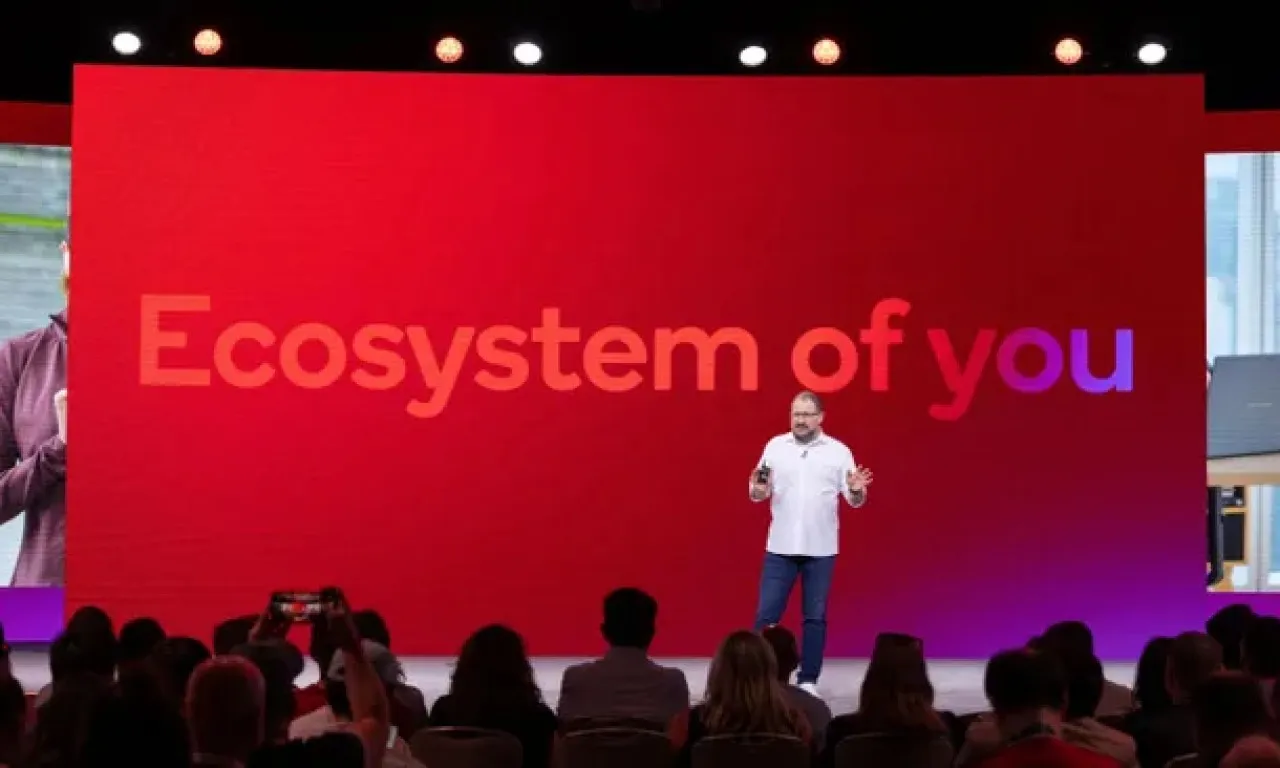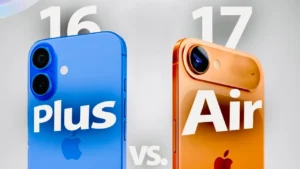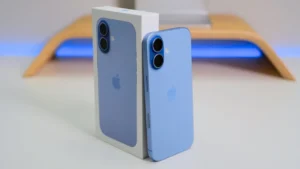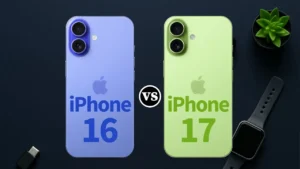Let’s be honest, the term “AI” has been thrown around so much it’s starting to lose its meaning. For years, it’s been a buzzword, a vague promise of a futuristic world run by talking robots. We’ve seen gimmicky features and clunky assistants that felt more like novelties than necessities. But what if I told you that’s all about to change? Thanks to a pivotal shift in strategy from tech giants like Google and Qualcomm, we’re finally seeing what AI is really for. The revolution is here, and it’s called on-device AI.
For the longest time, the heavy lifting of artificial intelligence happened far away in the cloud. Your phone would send a request to a massive data center, a powerful server would process it, and the result would be sent back. This process, while functional, has some serious drawbacks in privacy, speed, and true personalization.
On-device AI flips that script entirely. It’s about bringing the power of sophisticated AI models, like Google’s Gemini Nano, directly onto the super-efficient silicon in your pocket, like Qualcomm’s latest Snapdragon chips. This isn’t just a minor upgrade; it’s a fundamental rethinking of how our devices work, making them faster, more secure, and infinitely more personal.
This is the moment AI stops being a “feature” and starts becoming an intuitive, seamless part of your daily life—an “ambient” intelligence that works for you without you even noticing. Get ready, because your smartphone is about to get a whole lot smarter.
Contents
- 1 What Exactly Is On-Device AI? A Simple Breakdown
- 2 The Power Duo: How Google and Qualcomm Are Leading the Charge
- 3 7 Game-Changing Benefits of On-Device AI
- 4 What Can On-Device AI Actually Do? Real-World Examples
- 5 Challenges and the Road Ahead for On-device AI
- 6 Conclusion: Your Phone Is No Longer Just a Phone
What Exactly Is On-Device AI? A Simple Breakdown
So, what’s all the fuss about? In the simplest terms, on-device AI means that complex artificial intelligence tasks are performed locally on your smartphone, tablet, or laptop, rather than being sent to the cloud.
Think of it like having a gourmet chef right in your kitchen instead of ordering takeout. When you order takeout (cloud AI), you have to send your order out, wait for it to be prepared in a distant kitchen, and then have it delivered. It works, but there’s a delay, a risk of your order getting mixed up, and you’re sharing your preferences with a third party.
When you have a personal chef (on-device AI), everything happens right there. It’s instantaneous, completely private, and the chef knows your exact tastes because they’re right there with you. This is the core advantage of processing information locally. It eliminates the round-trip to a server, making everything happen in the blink of an eye while keeping your personal data securely in your hands.
The Old Way: A Reliance on the Cloud
Cloud-based AI has powered many of the smart features we’ve used for years, from voice assistants to photo recognition. It allows for incredibly powerful computations because it taps into the near-limitless resources of server farms.
However, this approach has its limitations. It requires a constant internet connection to function. It introduces latency—that small but noticeable delay between your request and the AI’s response. Most importantly, it means your data, whether it’s a voice command or a personal photo, has to leave your device, raising valid privacy concerns.
The New Paradigm: Intelligence in Your Hand
On-device AI solves these problems. By running smaller, highly efficient AI models directly on a device’s dedicated hardware—like a Neural Processing Unit (NPU)—it cuts the cord to the cloud.
This shift is made possible by two key advancements: the miniaturization of powerful Large Language Models (LLMs) into “nano” versions and the development of mobile chipsets with specialized AI engines. It’s a perfect marriage of software and hardware that is finally making our devices truly intelligent collaborators.
The Power Duo: How Google and Qualcomm Are Leading the Charge
This revolution isn’t happening in a vacuum. It’s being driven by a powerful collaboration between the world’s leading software company, Google, and the top mobile chipmaker, Qualcomm. Together, they are creating the ecosystem needed for on-device AI to thrive.
Google is responsible for the brains of the operation. They developed Gemini, a family of incredibly capable AI models. The smallest and most efficient of these is Gemini Nano, specifically designed to run directly and efficiently on mobile devices. It’s a masterpiece of engineering that brings tremendous generative AI capabilities to the palm of your hand without draining your battery.
Qualcomm, on the other hand, provides the brawn. Their Snapdragon mobile platforms, especially the latest generations, are built with a powerful Hexagon NPU. This isn’t your standard processor; it’s a piece of silicon engineered specifically to handle the complex mathematical calculations of AI tasks with incredible speed and power efficiency. When you combine Gemini Nano with a Snapdragon chip, you get a device that’s built for the future of AI.
7 Game-Changing Benefits of On-Device AI
Why should you, the user, be excited about this? Because on-device AI isn’t just a technical achievement; it brings tangible, real-world benefits that will fundamentally change how you interact with your technology.
1. Unbreakable Privacy and Security
This is the big one. In an era of constant data breaches and privacy concerns, on-device AI offers a sanctuary for your personal information. Because your data is processed locally, it never has to be uploaded to a server. Your photos, messages, voice recordings, and personal documents stay exactly where they belong: on your device. This single change represents a monumental leap forward for user privacy.
2. Blazing-Fast, Zero-Latency Performance
Remember the lag when your smart assistant thinks about a response? With on-device AI, that’s a thing of the past. Since there’s no need to communicate with a distant server, responses are instantaneous. Real-time language translation can happen mid-conversation, and photo edits can be applied the moment you select them. This low-latency performance makes the entire user experience feel smoother, more responsive, and more natural.
3. True, Deep Personalization
An on-device AI can learn from your unique habits and patterns in a way that a cloud-based system never could. It can securely analyze your emails, calendar, and app usage to become a true personal assistant. It can learn your writing style to offer better predictive text, understand your daily routine to give you proactive traffic alerts, and recognize the people you photograph most often to organize your gallery—all without ever compromising your privacy.
4. Uninterrupted Offline Capability
What happens to cloud AI when you’re on a plane, in the subway, or hiking in an area with no signal? It stops working. On-device AI, however, is completely self-sufficient. You can summarize documents, draft emails, transcribe audio recordings, and use advanced camera features without needing an internet connection. This makes your device more reliable and useful, no matter where you are.
5. Enhanced Reliability and Consistency
By removing the dependency on an internet connection and cloud servers, on-device AI becomes inherently more reliable. There are no server outages or network congestion issues to worry about. The AI features on your phone will work consistently every single time you need them, providing a predictable and trustworthy experience.
6. Significant Cost Savings (for You and Developers)
Processing massive amounts of data in the cloud is expensive. Companies often bear these server costs, but they can sometimes be passed on to the consumer through subscriptions or ads. On-device processing eliminates these recurring costs. It’s a one-time hardware investment, making powerful AI features more accessible and economically sustainable for everyone in the long run.
7. Better Battery Life and Efficiency
You might think running a powerful AI on your phone would kill the battery, but the opposite is often true. Sending data back and forth over Wi-Fi or cellular networks consumes a lot of power. Specialized hardware like Qualcomm’s Hexagon NPU is designed to perform AI tasks using a tiny fraction of the energy a standard CPU would need. This means you get incredible AI power without sacrificing your device’s battery life. For more on this, check out Google’s official blog post about Gemini, their most capable AI model.
What Can On-Device AI Actually Do? Real-World Examples
This all sounds great in theory, but what does it look like in practice? The applications for powerful, private, and fast on-device AI are nearly limitless.
Here are just a few examples of what’s becoming possible:
- A Truly Proactive Assistant: Imagine an assistant that notices an upcoming dinner appointment in your calendar, checks the real-time traffic, and discreetly suggests you leave 10 minutes early—all without you asking. It could even summarize a long email thread from your boss and suggest three concise replies based on your typical writing style.
- Next-Generation Photography and Videography: Your phone’s camera will be able to perform magic. Think real-time video enhancement that adjusts lighting and color frame-by-frame, or an “object eraser” that can remove unwanted people from a video clip, not just a static photo. It could even help you capture the perfect shot by analyzing the scene and suggesting compositional changes instantly.
- Live Language Translation and Transcription: You could have a seamless conversation with someone speaking another language, with your phone providing a real-time translation on-screen or through your earbuds. You could also record a lecture or meeting and get an instant, highly accurate transcript and summary the moment it ends.
- Smarter, “Ambient” Experiences: This is the ultimate goal. The AI fades into the background, working as an invisible layer that makes everything you do easier. Your phone might learn that you always listen to a certain podcast on your morning commute and have it pre-loaded and ready to go. Or, your smart glasses and phone could work together, allowing the AI to “see” what you see and provide helpful, contextual information about your surroundings.
Challenges and the Road Ahead for On-device AI
Of course, the path to a fully realized on-device AI future isn’t a simple stroll down the block; it’s a complex journey fraught with significant technical obstacles.
The widespread adoption of powerful, local AI hinges on solving a few critical challenges that engineers at companies like Google and Qualcomm are working tirelessly to overcome.
The primary challenge is the delicate, ongoing balancing act between raw processing power and energy efficiency, a crucial consideration for any battery-powered device.
The Constant Battle: Performance vs. Power Efficiency
Squeezing a sophisticated AI model onto a mobile chip without compromising performance or draining the battery in an hour is an immense engineering feat. Unlike a desktop computer with fans and cooling systems, a smartphone operates within a tight thermal envelope.
Pushing the processor too hard for too long generates heat, forcing the phone to throttle (slow down) its performance to protect the internal components. This is a major roadblock for continuous on-device AI tasks, like real-time video analysis or constant environmental awareness.
The key metric here isn’t just raw speed, often measured in TOPS (Trillions of Operations Per Second), but rather performance-per-watt. The goal of next-generation NPUs (Neural Processing Units) is to deliver the highest number of TOPS using the least amount of energy possible.
This is why running on-device AI on a phone’s main CPU is a non-starter; it’s like using a race car engine to run errands—powerful, but wildly inefficient. Specialized NPU hardware is the only way to make meaningful on-device AI a sustainable reality.
The Great Shrink: Fitting a Supercomputer into Your Palm
Furthermore, there are fundamental limitations on memory and processing power compared to the virtually infinite resources of the cloud. A state-of-the-art cloud AI model might have trillions of parameters and require hundreds of gigabytes of memory to run.
This is simply impossible to replicate on a smartphone with a shared pool of 8GB or 12GB of RAM. The central challenge for on-device AI is model compression.
This involves advanced techniques to shrink these massive models into something manageable without losing too much of their “intelligence”:
- Quantization: This process reduces the precision of the numbers used in the AI’s calculations (e.g., converting 32-bit floating-point numbers to much smaller 8-bit integers). This drastically cuts down on the model’s size and the energy required to run it on an NPU.
- Pruning: This involves intelligently removing redundant or non-essential connections within the neural network. Think of it as trimming the fat from the model, leaving only the most critical pathways, which makes the on-device AI faster and leaner.
The Developer’s Dilemma: A Fragmented Ecosystem
Beyond the hardware, deploying on-device AI presents a significant software challenge. Developers need specialized toolkits and APIs to access the NPU on a given device.
This creates a fragmented landscape where an AI feature might work perfectly on a new Qualcomm Snapdragon chip but fail to run on a different manufacturer’s hardware. This lack of a universal standard makes it difficult and costly for developers to build on-device AI applications that work for everyone.
However, with the rapid advancements in both AI software optimization from companies like Google and the specialized hardware prowess of chipmakers like Qualcomm, these challenges are being overcome faster than ever before.
The future is likely a hybrid model, where your device handles most tasks locally for speed and privacy, while seamlessly offloading extremely complex requests to the cloud. We are at the tipping point where the benefits of on-device AI are beginning to far outweigh its limitations, paving the way for a truly intelligent personal device.
Conclusion: Your Phone Is No Longer Just a Phone
The shift to on-device AI is not just another tech trend; it’s the dawn of a new era in personal computing. For years, we’ve adapted to our devices, learning their quirks and limitations. Now, our devices are finally learning to adapt to us.
The collaboration between Google’s sophisticated AI models and Qualcomm’s powerful hardware is creating a future where our smartphones are true companions.
They will be hyper-personal, utterly private, and incredibly responsive assistants that anticipate our needs and work seamlessly in the background to make our lives easier.
This is what AI was always meant to be—not a gimmick, but a powerful, invisible tool that empowers us. The next time you pick up your phone, know that you’re holding more than just a communication device; you’re holding the key to a smarter, more intuitive future.
***




